***This article originally appeared in the Sept./Oct. ’22 issue of Animation Magazine (No. 323)***
It’s been 24 years since Brazilian director Alê Abreu’s first animated short Espanthalho (The Scarecrow) put the talented artist on the map. To most fans, he is best known for his charming first movie The Boy and the World, which earned him an Oscar nomination for Best Animated Feature in 2016. This year, the writer-director makes a triumphant comeback with a new movie titled Perlimps, which premiered at Annecy and will screen in competition at the Ottawa International Animation Festival in September.
The colorful film centers on the adventure of Claé and Bruô, two secret agents from enemy kingdoms who have to join forces despite their differences to save the Perlimps from the Green Slime that threatens to destroy the forest. (The film’s title Perlimps was suggested by the film’s producer Luiz Bolognesi, who was inspired by the word pirilampos, “fireflies” in Portuguese, and refers to what the two main characters are searching for in the movie.)
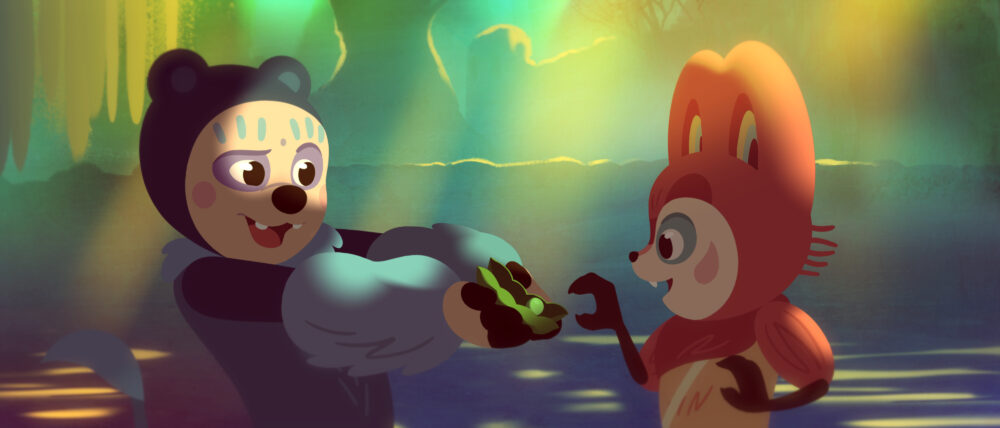
A Multitude of Muses
When asked about the sources of inspiration for the movie, Abreu says there was a wide variety of drawings, stories and objects that led to what audiences will see on the screen. “The development of a film is never a very rational and clear process for me,” he says during a recent email interview. “I am inspired in many ways, music and painting mainly. I collect notes (loose drawings, bits of story, characters, etc.) over a long period of time before finding connections among them and discovering if there is a film there.”

“A new universe begins to come to life with this process, and the story itself isn’t quite clear to me at this point,” the director adds. “When I began working on Perlimps, I scattered all these notes over the floor and I watched them for hours. I organized these elements and out of them came the storyline and a selection of drawings that showed me the way for the movie.”
Perlimps executive producer Ernesto Soto adds, “From my point of view, the inspiration comes from a desire of Alê to inhabit the mind of a child. And to get in touch with the freedom we had when we were kids. The Enchanted Forest, where the story takes place, is apparently a physical space, but it also represents a state of mind.”
Abreu notes, “I was born in São Paulo, but I lived part of my childhood in a suburban area of the city — at the time, it was a very green place, with farms, creeks and trails. The forest in Perlimps is also a symbolic place, related to childhood — a place in time, we could say, left behind when we transition to adulthood and the loss of childhood that comes with it.”
According to Soto, it took about nine years to complete the movie. “We had four years of development since Alê’s first sketches, and four-and-a-half years of pre-production and production,” he says. “Alê has drafts and drawings that go back to 2014. In 2016 we had a bible to start our fundraising, which took almost three years. We started pre-production officially in 2018. Overall, adding the different stages, around 80 or 90 people worked on the film. The Brazilian currency has fluctuated much during the years that we have worked on the project, but if we consider today’s exchange rate, our budget would be around $1.85 million.”
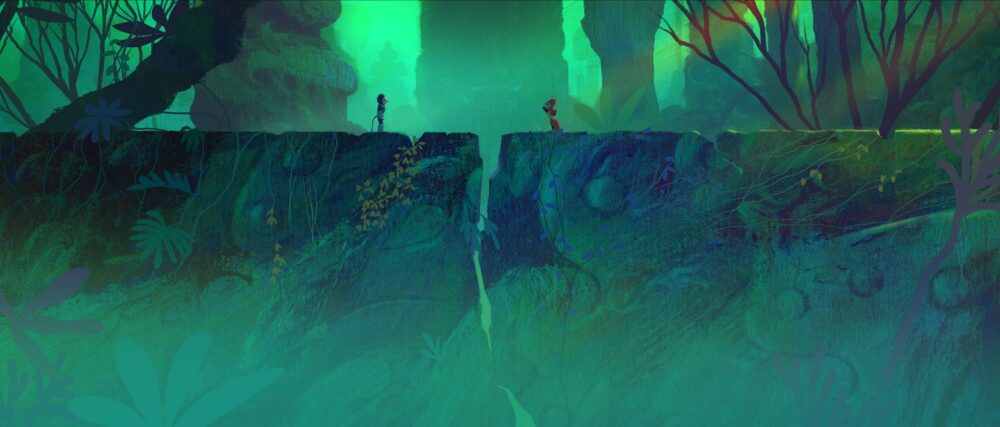
The producer mentions that the animation industry in Brazil has been hit hard by the socio-political climate in the country over the past few years. “Brazil had many years of steady investment in the development of an animation industry with a lot of grants and public financing,” Soto points out. “All these incentives made the industry grow; a lot of new talent emerged and independent productions such as ours were possible. Unfortunately, under the current government, culture has not been a priority anymore and many of those talents are now working for studios abroad. But, I firmly believe Brazil will continue to be an important voice in the independent animation scene.”
Perlimps is produced by São Paulo-based Buriti Filmes and co-produced by Sony Pictures International and Globo Filmes. The animation for the film was hand drawn by Abreu and a reduced team which spent four years in a mountain village in Brazil.

As the film’s assistant director Viviane Guimarães explains, “We created a studio and hired our own team to work on the film, but the animation itself was mostly done by Alê Abreu (Claé and Bruô scenes) and animator Sandro Cleuzo (John Ovenbird), with some additional animation by myself. Alê Abreu animated in Photoshop, Sandro Cleuzo in Toon Boom and me in TVPaint, so the software itself didn’t matter at this point. For the John Ovenbird scenes, the cleanup was also done in Toon Boom. For the Claé and Bruô scenes, we did the final art in Photoshop.”
Abreu says as an artist, one of the greatest challenges of the film was to keep the initial feelings of inspiration and ambition alive throughout the years. “I had to hold on to the feelings that motivated me to make it throughout the production process with all its obstacles to overcome,” he admits. “I put a great deal of effort in not losing sight of the emotions that made me dive into the universe of the film, so that they could guide me during the production and finally be reflected in the movie.”
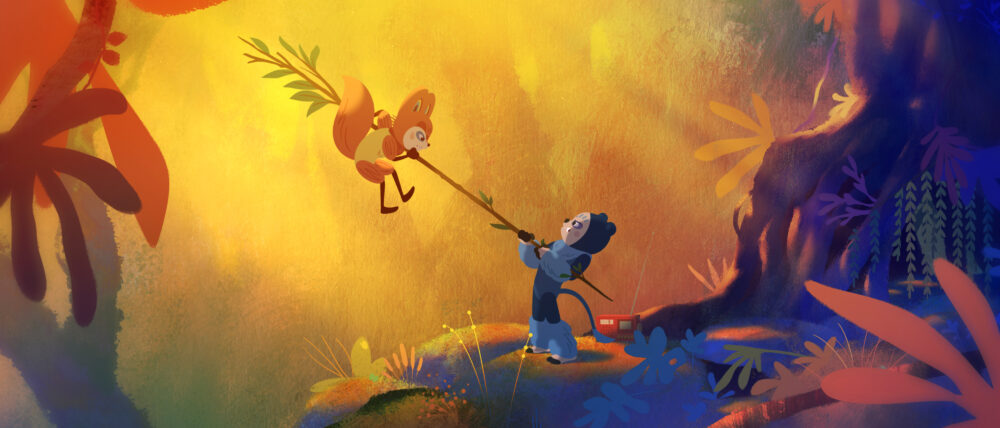
The director also mentions that he cannot pinpoint one particular influence on the visual style of the movie. He explains, “There comes a time when someone’s work is such a mixture of things that it is not so easy to identify the direct influences. But I could mention Roger Dean, Mœbius and René Laloux, not only for the reference to psychedelia that I tried to imprint on the film, but also because of the fond memories I have of these artists in my childhood and youth.”
“With this film I was guided mainly by color, a very powerful tool that brings an important layer to the adventure and is key to the understanding of the film,” Abreu told Variety earlier this year. “Childhood is represented in the film as a physical space where everything is possible, generating an incredible power of transformation through hope.”
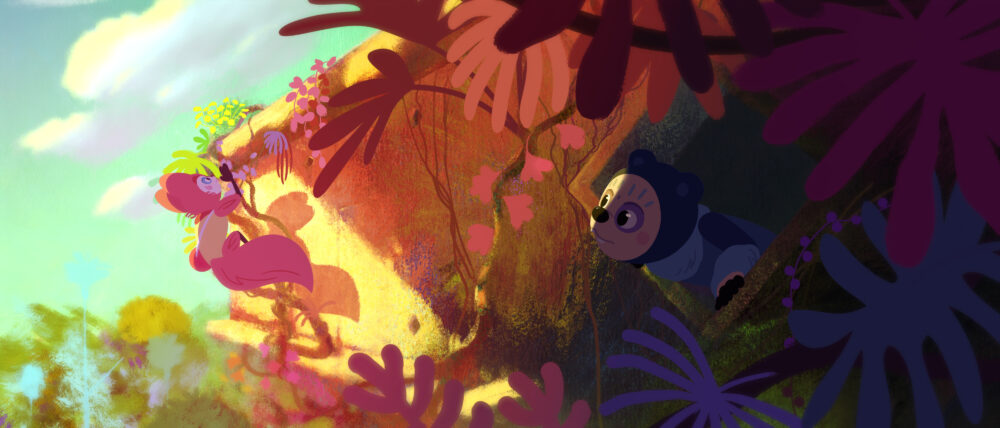
A Student of Laloux
He does however mention several films that made a huge impact in his artistic development early on in his life. “I watched two films by René Laloux in a small film club in São Paulo many years ago: Fantastic Planet and Time Masters. In addition to inspiring me to work in animation, those films showed me a path for the kind of film I wanted to make. I also recently reviewed Isao Takahata’s The Tale of the Princess Kaguya, and I believe it is one of the masterpieces of animated cinema.”
However, Abreu says he has been less pleased with what he has seen on the screen in recent years. “As far as feature films go, I think there is a movement that seeks to take animation out of the aesthetic sameness of CGI productions,” he notes. “But very little of what I have seen lately has been pleasing or exciting.”
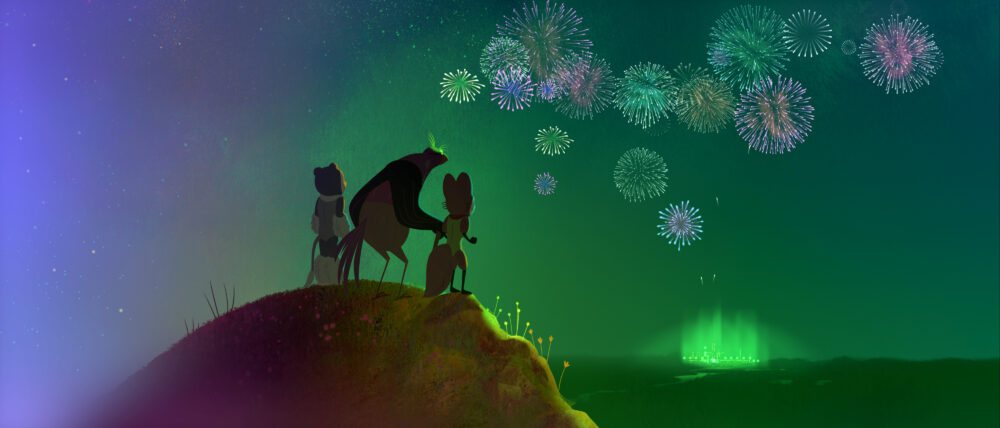
The filmmakers are hoping that the new movie will connect to both younger and older audiences. “We hope that the audiences will have an immersive experience in a dreamlike fantasy world and that children and adults will be able to connect with their inner child,” says Bolognesi. “We think it’s a film that can please both family audiences and animation fans. In the end, I believe there is a message of hope and cry for peace, added to the urgency of preserving our natural resources.”
Perlimps makes its North American premiere this month at the Ottawa International Animation Festival.








 Win a Funko X Lilo & Stitch Prize Pack!
Win a Funko X Lilo & Stitch Prize Pack! 


